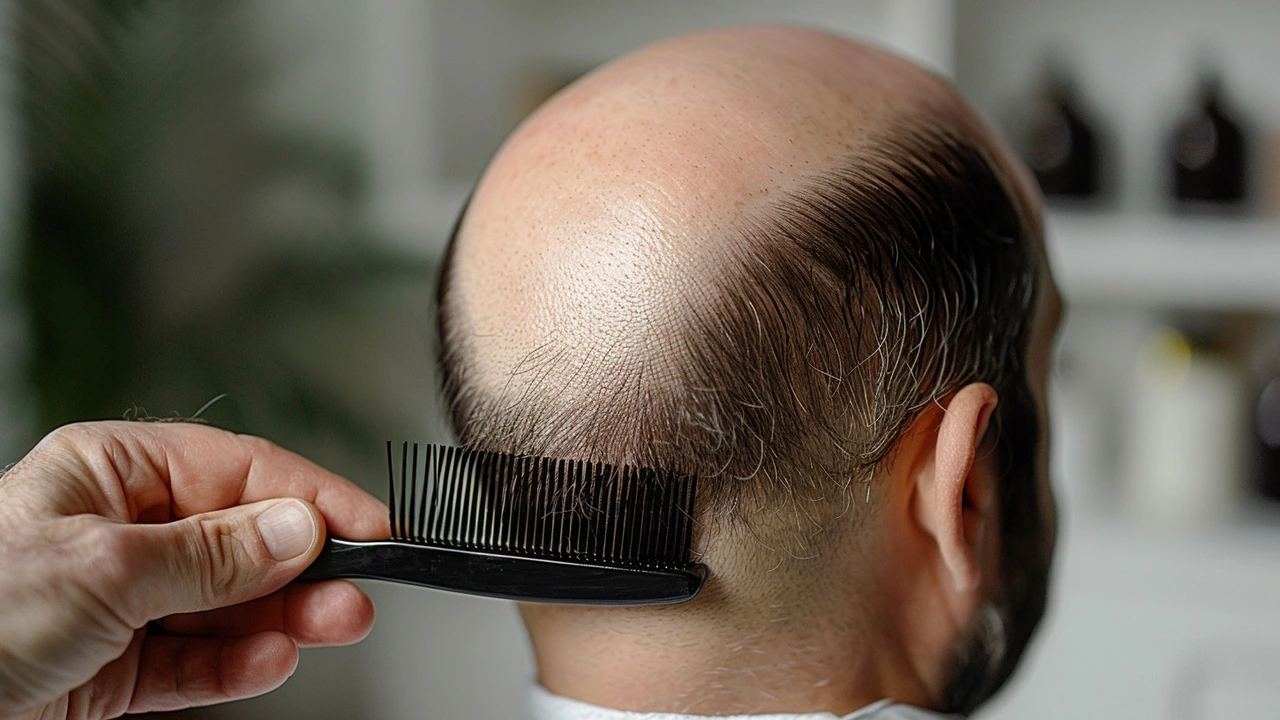Hair Loss: Simple Facts and Practical Steps
About 50% of men and around 40% of women notice visible hair thinning by midlife. If you’re spotting more hair in the shower or on your pillow, this short guide helps you sort causes from hype and pick practical next steps. No fluff—just things you can try or ask your doctor about.
What usually causes hair loss?
Genetics is the top cause. Androgenetic alopecia (male or female pattern) follows family lines and often starts with a receding hairline or widening part. Other clear causes: low iron or vitamin D, thyroid issues, certain medications, major stress or surgery, and autoimmune conditions like alopecia areata. Even tight hairstyles and heavy chemical styling can pull hair out over time.
If shedding feels sudden or patchy, get checked. Sudden loss often points to medical triggers that are treatable. Slow, patterned thinning often responds best to early treatment.
Practical treatment options you can try
Topical minoxidil: Widely studied and available without prescription. Typical use is a 2% or 5% solution or foam applied to the scalp daily. Expect 3–6 months before you see benefit. Side effects are usually scalp irritation; if it helps, you need to keep using it to maintain results.
Oral finasteride (Propecia): A common option for men. The usual dose is 1 mg daily and it can slow or reverse pattern hair loss for many. Be aware of possible sexual side effects for a minority of users; discuss risks with your doctor. Women who are or may become pregnant should not take finasteride.
Low-level laser therapy (LLLT): Devices like combs and helmets offer modest regrowth for some users. Use regularly as directed—results take months and vary person to person.
Medical procedures: Platelet-rich plasma (PRP) injections and hair transplants are options if topical or oral treatments fall short. PRP can boost density in early cases; transplants move healthy follicles to thinning spots and give permanent results when done by an experienced surgeon.
Natural and lifestyle moves that help: check iron, vitamin D and thyroid levels; get protein in meals; avoid tight ponytails and harsh heat styling; cut smoking; manage stress with sleep, exercise, or short-term therapy. These won’t cure genetic hair loss but improve scalp health and support treatments.
Quick practical checklist: take photos every month to track progress, test iron and vitamin D, stop tight hairstyles, try minoxidil consistently for at least 4–6 months, and see a dermatologist if hair keeps falling or you notice patchy loss.
Want deeper reading? We cover new options and Propecia alternatives in our article Exploring Cutting-Edge Alternatives to Propecia in 2025. Browse related posts on this tag for comparisons, safety tips, and real-world advice tailored to different causes of hair loss.

Finasteride's Broader Impact: Beyond Hair Loss to Prostate Cancer Prevention
A groundbreaking study by Harvard Medical School indicates finasteride, a drug primarily used for treating male pattern baldness, may also substantially reduce prostate cancer risk among men. This discovery hints at significant health advantages beyond mere hair regeneration.
- Health and Wellness (58)
- Drug Information (45)
- Pharmacy Information (19)
- Medical Conditions (17)
- Supplements (4)
- Diabetes (3)
- Travel Health (2)
- Parenting (2)
- Mental Health (2)
- Heart Health (1)
-
Clavulanic Acid: Addressing the Challenges of Antibiotic Resistance
5 May 2023 -
Sarcopenia: How Strength Training Slows Age-Related Muscle Loss
10 Dec 2025 -
Steroid Eye Drops: Benefits, Risks, and How to Monitor Them Safely
19 Nov 2025 -
Medication Safety for Caregivers: Essential Steps to Prevent Errors at Home
22 Nov 2025 -
Buy Cheap Generic Singulair Online - 2025 Guide
11 Oct 2025

22.03.24
Alistair Mukondiwa
16